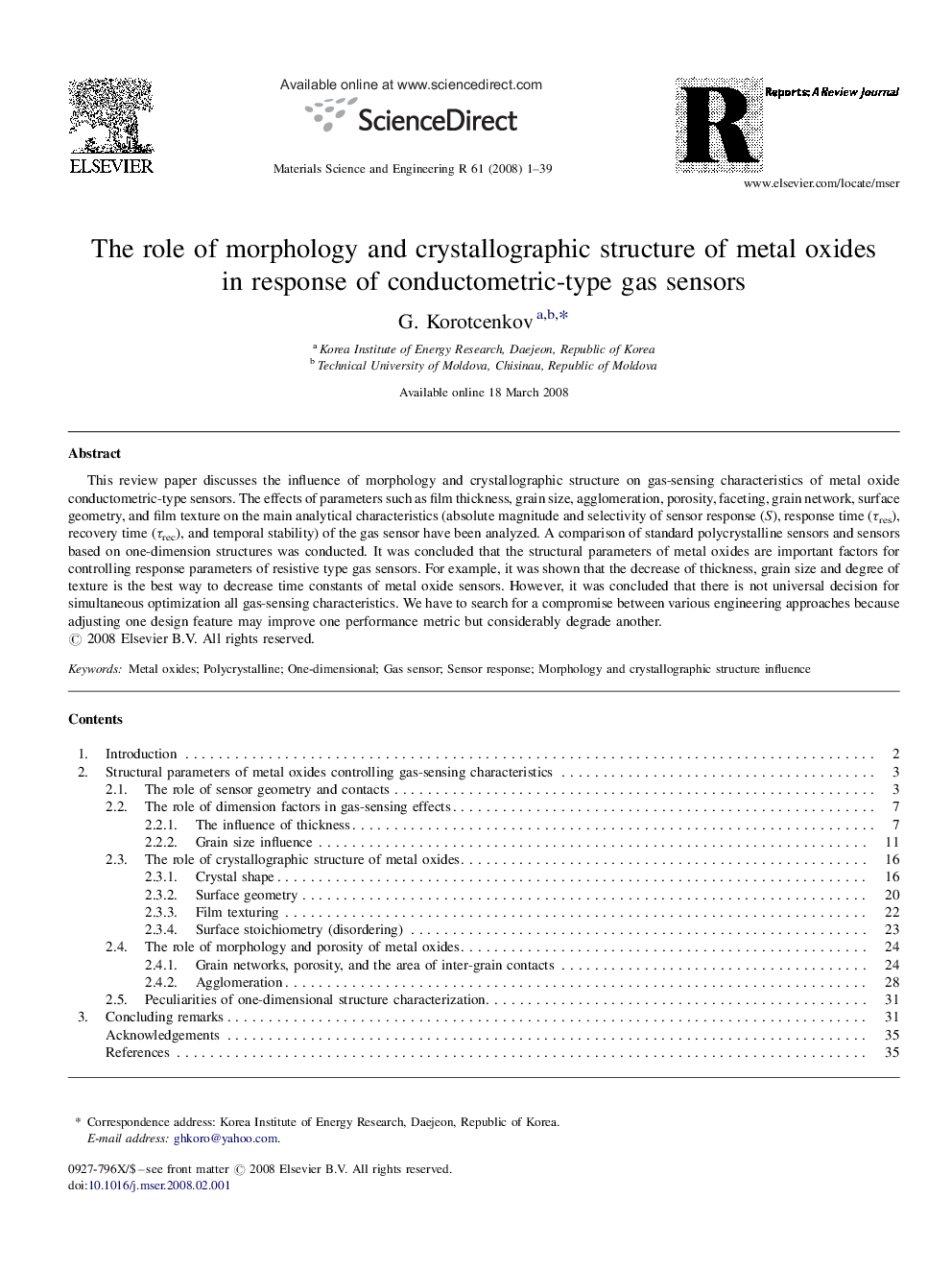| Article ID | Journal | Published Year | Pages | File Type |
|---|---|---|---|---|
| 1532712 | Materials Science and Engineering: R: Reports | 2008 | 39 Pages |
This review paper discusses the influence of morphology and crystallographic structure on gas-sensing characteristics of metal oxide conductometric-type sensors. The effects of parameters such as film thickness, grain size, agglomeration, porosity, faceting, grain network, surface geometry, and film texture on the main analytical characteristics (absolute magnitude and selectivity of sensor response (S), response time (τres), recovery time (τrec), and temporal stability) of the gas sensor have been analyzed. A comparison of standard polycrystalline sensors and sensors based on one-dimension structures was conducted. It was concluded that the structural parameters of metal oxides are important factors for controlling response parameters of resistive type gas sensors. For example, it was shown that the decrease of thickness, grain size and degree of texture is the best way to decrease time constants of metal oxide sensors. However, it was concluded that there is not universal decision for simultaneous optimization all gas-sensing characteristics. We have to search for a compromise between various engineering approaches because adjusting one design feature may improve one performance metric but considerably degrade another.
